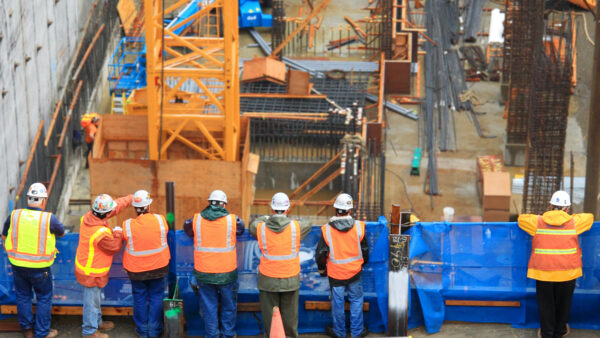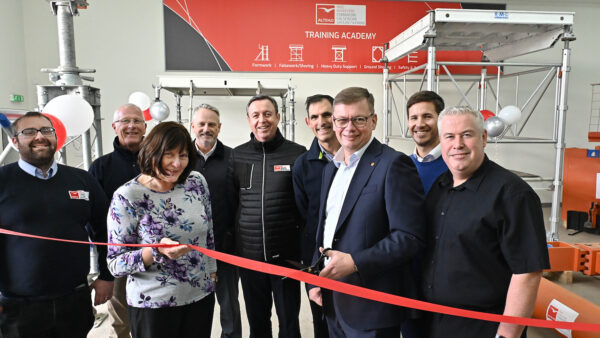
What’s costing you more money: late material deliveries or stressed-out staff?
Most builders I work with think profits disappear because of underpriced quotes or clients not paying on time.
But let’s be honest. One of the biggest silent profit killers is your team’s lack of wellness.
I’m not talking about gym memberships and free fruit. I mean real wellbeing: mental health, manageable workloads and an environment where your staff want to stay and perform at their best.
Ignore this, and you’ll keep bleeding money through mistakes, absenteeism and constant staff turnover.
The building analogy
Think of your business like a house. The bricks are your systems and the mortar is your cashflow. But your employees? They’re the foundation.
If the foundation is cracked – if your team is exhausted, resentful or unhealthy – everything above eventually crumbles. No matter how solid the rest looks, the whole structure is unstable.
That’s why investing in wellness isn’t ‘nice to have’. It’s not fluffy HR nonsense. It’s one of the smartest profitability strategies you can implement.
Why leaders must take wellness seriously
Too many business owners still treat wellness as an afterthought, something HR should ‘tick the box’ on.
But if you’re serious about building a profitable construction company, wellness has to sit at the top of your leadership agenda. Here’s why:
- Your staff are your biggest asset. You can buy new vans, tools or software. But you can’t replace years of experience and skill when a good foreperson quits because they’re burnt out.
- Stress spreads like wildfire. If one team member is struggling, it drags the whole crew down. Negativity on site leads to mistakes, arguments and poor client experiences.
- Profit margins are tight enough already. Wellness isn’t a ‘cost’, it’s protection. Every sick day avoided or staff member retained is money kept in your business instead of leaking out.
- Your example sets the tone. If you’re constantly stressed, overworked and never switch off, your team will mirror it. Wellness starts with leadership. When you show balance, your team feels permission to do the same.
The truth of the matter is that a leader who ignores wellness is like a builder ignoring damp. You might not see the damage straight away, but sooner or later the whole structure collapses.
Three ways wellness drives profits
1. Fewer sick days = higher productivity
Stress, burnout and fatigue are the biggest reasons employees call in sick. In construction, that means delayed jobs, unfinished sites and angry clients.
Every day a key worker is off, you’re either paying overtime to cover them or losing days of productivity. Multiply that by a few staff, and suddenly your profit margin is shredded.
By creating a culture that encourages reasonable working hours, site safety and mental health awareness, you dramatically reduce absenteeism.
Fewer sick days = more projects finished on time = healthier cashflow.
2. Better staff retention = lower recruitment costs
Recruiting in construction is a nightmare. Skilled trades are hard to find, and training new hires takes months. If you’ve ever lost a site manager mid-project, you’ll know the chaos it causes.
When your employees feel supported – whether that’s flexibility when needed, recognition for their graft, or opportunities to grow – they stick around. That loyalty saves you thousands in recruitment fees, training time and the hidden costs of turnover.
Remember: happy staff don’t just stay; they also bring in other good people. Word spreads fast in the trades about which companies look after their team.
3. Motivated teams deliver higher quality
Wellness isn’t just about avoiding negatives, it fuels positives.
A workforce that feels valued and supported doesn’t just turn up, they go the extra mile.
That means fewer snags, smoother projects and happier clients. And happier clients don’t just pay on time, they give you referrals and five-star reviews.
High morale literally puts money in your bank account.
How to build wellness into your construction firm
You don’t need beanbags and mindfulness apps. You need practical systems that make life better for your team and more profitable for you.
Workload management
- Stop dumping unrealistic deadlines on your crew. Proper planning prevents last-minute panic.
- Scheduling and site systems reduce stress and keep projects flowing.
Communication and recognition
- A 10-minute daily huddle keeps everyone aligned and avoids firefighting.
- Publicly recognise hard work. A simple “well done” in front of the team can motivate more than a pay rise.
Growth opportunities
- No one wants to feel stuck. Offer training, upskilling or a clear route from labourer to foreperson.
- Invest in your people and they’ll invest in your business.
Work-life balance
- Wellness isn’t just on site. Respect your employees’ family time. If your team is constantly burnt out, mistakes will creep in.
- Protect evenings and weekends unless absolutely critical.
So, the question is: will you keep seeing your staff as costs to be minimised, or as investments that deliver the highest ROI in your business?
Take care of your people, and they’ll take care of your profits.
Action point checklist
- Review your current sick days and calculate the cost. What’s it really draining from your profits?
- Implement daily site huddles to improve communication and reduce stress.
- Set up a simple recognition system: public praise or small rewards for great work.
- Offer at least one growth opportunity per employee this quarter.
- Protect personal time: no late-night texts or weekend demands unless absolutely critical.
Greg Wilkes is founder of Develop Coaching.
Comments
Comments are closed.










What a fantastic goal, but in my experience, it’s always the senior site staff that don’t have the time for the care of junior staff. Reason, they’re too stressed themselves in planning the programme of work, designing/managing the technical details & dealing with the often onerous requirements of the client & CofW, let alone trying to ensure the contract makes a profit &/is on programme! Perhaps those of a fragile nature should work from home?